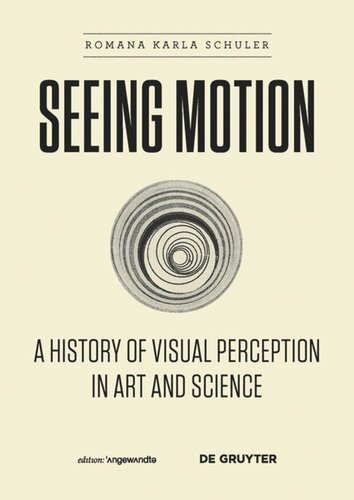

Most ebook files are in PDF format, so you can easily read them using various software such as Foxit Reader or directly on the Google Chrome browser.
Some ebook files are released by publishers in other formats such as .awz, .mobi, .epub, .fb2, etc. You may need to install specific software to read these formats on mobile/PC, such as Calibre.
Please read the tutorial at this link: https://ebookbell.com/faq
We offer FREE conversion to the popular formats you request; however, this may take some time. Therefore, right after payment, please email us, and we will try to provide the service as quickly as possible.
For some exceptional file formats or broken links (if any), please refrain from opening any disputes. Instead, email us first, and we will try to assist within a maximum of 6 hours.
EbookBell Team

4.4
22 reviewsThe central focus of this publication is the synthesis of science and art in the field of visual perception, in particular how early 19th century perceptual research into illusions, kinetic illusory figures, and illusory movement influenced the apparative / machine, kinetic art of the 20th century and the computer-generated visual art of the 21st century.
Professional artists have traditionally used innovative, scientific inventions involving light and perspective for their work as well as making use of “visual aids”.
Since the beginning of the 1920s, artists like Marcel Duchamp have been experimenting with illusory movement. Based on these early ideas and artistic experiments, and due to its relationship with illusory space, there was a renewed interest in illusory contour, especially among representatives of kinetic art and op art.
Seeing Motion provides an historical overview extending from the theories of experimental visual perception research (Hermann Helmholtz, Ernst Mach, Sigmund Exner, Wilhelm Stern, Vittorio Benussi, Max Wertheim, George Stratton, Ivo Kohler) to apparative art (Alfons Schilling) and electronic-digital art (Jeffrey Shaw, Peter Weibel).